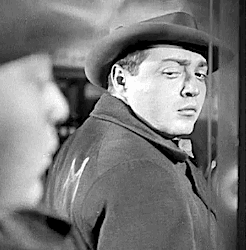#max reich
Text
Seek first the Kingdom of God. Everything else must stand aside—personal, family or national interest—yea, life itself. No half-measures will ever succeed in efforts for that Kingdom which aims at turning the world upside down.
Max Reich, "The Abolition of War" in The Friend, 1915
#quaker#quakerism#max reich#the friend#wwi#pacifism#the peace testimony#seek first the Kingdom#christianity#turn the world upside down
75 notes
·
View notes
Text






History repeats itself.
GAME CHANGER
Lou Wilson in s5e09 "Escape The Greenroom" & s6e03 "Sam Says 3".
#dropoutsource#dropoutedit#gamechangeredit#dropout tv#game changer#sam reich#lou wilson#vic michaelis#jacob wysocki#brennan lee mulligan#siobhan thompson#~#*gcp#hoo boy i need to figure out how to colour the game changer set#oops fixed the 5th one i love when gifs dont work even when they are 2mb under max limit
7K notes
·
View notes
Text
A Crash Course in Sky Cleaning with Orgonite - Sharon Daphna on Unbroken.global
Mar. 19, 2024 - Unbroken.global
Learn how to clean your sky of pollution and bring natural weather, especially abundant rainfall, easily. Anyone can do it! This is Sharon's presentation at the Unbroken Summit, organized by Max Lowen of Unbroken.global on Dec. 3, 2023.
Website: https://www.thechembow.com
Blog: https://thechembow.tumblr.com
#orgone#orgone energy#orgonite#orgonite gifting#weather#wilhelm reich#orgonomy#meteorology#atmospheric science#chemtrails#contrails#planetary healing#geo-restoration#air pollution#drought#environment#unbroken#sharon daphna#max lowen
5 notes
·
View notes
Photo

Emperor Karl VII by Max Hailer.
#kaisersaal#max hailer#heiliges römisches reich#haus zum römer#haus wittelsbach#bayern#bavaria#full length portrait#Holy Roman Empire#holy roman emperor#house of wittelsbach#historisches museum frankfurt#full-length portrait
2 notes
·
View notes
Text
Reich/Richter: Cross fades
youtube
0 notes
Text
Die Reichen sind im Kollaps die Ärmsten
In der Klimagerechtigkeitsbewegung wird gerne darauf hingewiesen, dass die Ärmsten die größten Opfer der Klimakrise sind. Das ist (leider) wahr. Und trotzdem gibt es drei gewichtige Gründe dafür, dass auch die Reichen Angst vor dem drohenden Kollaps haben sollten: Sie sind ein logisches Ziel für viele Gegner.
Da in diesem Artikel u.a. von Massaker, Mord und Menschenjagd die Rede ist, will ich zu…

View On WordPress
#hollywood#katastrophe#klima#klimawandel#Kollaps#mad max#rache#reiche#superreiche#untergang#zivilisation
0 notes
Photo

Die Talberg Trilogie von Max Korn besteht aus den drei Krimis Talberg 1935, Talberg 1977 und Talberg 2022. Im Zentrum steht nicht nur ein abgelegenes Dorf in Bayern, sondern auch eine Handvoll Familien und ihre tragischen Schicksale, über Generationen hinweg.
0 notes
Text

As long as they let us see the little pig then I'm happy
80 notes
·
View notes
Text
Joseph Goebbels's time line

This is Joseph Goebbels,The Nazi minister for Propaganda, time-line:
1897: He was born in Rheydt
1900: His father bought a house at number 140 Dahlener Street, in Rheydt, today number 156.
1909: His sister, named Maria, was born.
1917: He moved to 18 Post Straße in Bonn to continue his studies
1919: He voted for the German Nationalist Party
1919: He moved to Munich.
1920: He moved to Heidelberg University, where he studied under the aegis of two Jewish professors, Friedrich Gundolf, professor of literary history, and Max von Waldberg, author of numerous books on the history of literature.
1922: He worked briefly as an art critic for a newspaper, but was fired; he later gave a public lecture on Oswald Spengler.
1922: He subsequently found work at the Dresdner bank in Cologne, thanks to the family relationships of his girlfriend, Else Janke, of Jewish origins. He remained there for nine months, only to be fired.
1924: He began writing his diaries.
1924: He organized the first political meetings in his father's house in Rheydt
1924: He published his first article in a weekly political magazine
1925: On January 20, 1925, he was fired from the magazine Völkische Freiheit and subsequently became Gregor Strasser's secretary.
1925: He was at the forefront, alongside Strasser, in supporting the campaign for the expropriation of the assets of the fallen nobles, proposed by the communist and social democratic deputies.
1926: on 29 March 1926 Hitler offered Goebbels the opportunity to speak in public, the following 8 April; Goebbels accepted and, from then on, was completely won over by the Führer.
1926: He officially broke with Strasser and definitively switched to Hitler's side.
1926: Hitler appointed Goebbels Gauleiter (regional section head) of Berlin.
1928: He was elected deputy to the Reichstag
1931: He married Magda, the ex-wife of an industrialist, on the estate of Günther Quandt in Mecklenburg: Hitler was his best man.
1932: His first child, named Helga, was born.
1933: Goebbels was called to the position of Minister of Propaganda.
1933: He organized the so-called ''Book Burnings'' in Berlin.
1934: His second child, named Hildegard, was born.
1935: His third child and only son, Helmut, was born.
1936: He became the lover of the Czechoslovakian actress Lída Baarová.
1937: His fourth child, named Holdine, was born
1937: He opened the exhibition of the so-called ''degenerate art'': no entry fee was required, to ensure that it was visited by as many people as possible.
1938: He helped organize Kristallnacht
1938: His fifth child, named Hedwig, was born.
1939: The Second World War began
1939: He visited Poland and in particular a ghetto.
1940: His sixth child, named Heidrun, was born
1940: He became editor of Das Reich.
1941: He read the declaration of war regarding the invasion of the Soviet Union.
1941: He began to take an active interest in the Jewish question. With Hitler's permission, he created a ''special mark for the Jews''
1943: He made the speech of total war.
1945: He was named plenipotentiary minister for total war mobilization and later general of the Wehrmacht, in charge of the defense of Berlin, this assignment meant a lot to Goebbels, who was unable to join the army during WW1 due to his disability
1945: From 22 to 29 April, He published the last Nazi newspaper in history, the Panzerbär.
1945: Hitler, in his last wishes, named him his successor as Reich Chancellor.
1945: Once Hitler died, Goebbels took over from him as chancellor on 30 April 1945, remaining in office for only almost a day and a half.
1945: He and his wife Magda, after having killed their six children with cyanide, they committed suicide.
Sources:
Wikipedia: Joseph Goebbels
Hitler and his loyalists: Paul Roland
Joseph Goebbels, the agitator: Documentary
If you don't like it go with your life :))
Note: If I get new information from my research I will edit the post :))
I DON'T SUPPORT NAZISM, FASCISM OR ZIONISM IN ANY WAY, THIS IS AN EDUCATIONAL POST
56 notes
·
View notes
Note
fascinated by your mention of the political nature of the constructions of teenage innocence and small-town americana in your twin peaks post. reminds me of your brief analysis of the erotic appeal of fascism/nationalism wrt lana del rey, strangely. do you happen to have any readings related to these topics? thanks!
i think i'm really just bouncing off reich's mass psychology of fascism and a few things deleuze says in anti-oedipus... like i'm positive i'm not the first person to apply these things to lana or lynch lol but i don't have readings to point to on them specifically. ig probably also adorno's minima moralia. but yeah i wish i had something offhand that's like, actually good about the erotics of american nationalism because everything i've read that talks about this specifically is like, maxxing out at "it's like a religion 😳" like it's just not insightful and lacks an understanding of bourgeois politics as spectacle and tries to resurrect its own brand of like, noble and non-horny patriotism lmfao
32 notes
·
View notes
Text

40 victory ace Lothar von Richthofen (left) with his brother, 80 victory ace of aces Manfred von Richthofen, aka The Red Baron, in front of a Fokker Dr.I, 1918, location unknown. Both wearing their Blue Max medal. For more, see my Facebook group - Eagles Of The Reich
#germany#ww1 german aircraft#manfred von richthofen#lothar von richthofen#the red baron#fokker#fokker triplane#blue max#1918
14 notes
·
View notes
Text
Christopher Nolan’s highly-anticipated movie “Oppenheimer,” set for release July 21, 2023, depicts J. Robert Oppenheimer and his role in the development of the atomic bomb. But while the Manhattan Project wouldn’t have been possible without the work of many accomplished female scientists, the only women seen in the movie’s trailer are either hanging laundry, crying or cheering the men on.The only women featured in the official trailer for Christopher Nolan’s ‘Oppenheimer’ are crying, hanging laundry or supporting the men.
As a physics professor who studies ways to support women in STEM – science, technology, engineering and math – fields and a film studies professor who worked as a screenwriter in Hollywood, we believe the trailer’s depiction of women reinforces stereotypes about who can succeed in science. It also represents a larger trend of women’s contributions in science going unrecognized in modern media.
Lise Meitner: A pioneering role model in physics
The Manhattan Project would not have been possible without the work of physicist Lise Meitner, who discovered nuclear fission. Meitner used Einstein’s E=MC² to calculate how much energy would be released by splitting uranium atoms, and it was that development that would prompt Einstein to sign a letter urging President Franklin Roosevelt to begin the United States’ atomic research program.
Einstein called Meitner the “Madame Curie of Germany” and was one of a pantheon of physicists, from Max Planck to Niels Bohr, who nominated Meitner for a Nobel Prize 48 times during her lifetime.
Meitner never won. Instead, the prize for fission went to Otto Hahn, her male lab partner of 30 years in Berlin. Hahn received the news of his nomination under house arrest in England, where he and other German scientists were being held to determine how far the Third Reich had advanced with its atomic program.
Of Jewish descent, Meitner had been forced to flee the Nazis in 1938 and refused to use this scientific discovery to develop a bomb. Rather, she spent the rest of her life working to promote nuclear disarmament and advocating for the responsible use of nuclear energy.
Meitner was not the only woman who made a significant contribution during this time. But the lack of physics role models like Meitner in popular media leads to real-life consequences. Meitner doesn’t appear as a character in the film, as she was not part of the Manhattan Project, but we hope the script alludes to her groundbreaking work.
A lack of representation
Only around 20% of the undergraduate majors and Ph.D. students in physics are women. The societal stereotypes and biases, expectation of brilliance, lack of role models and chilly culture of physics discourage many talented students from historically marginalized backgrounds, like women, from pursuing physics and related disciplines.
Societal stereotypes and biases influence students even before they enter the classroom. One common stereotype is the idea that genius and brilliance are important factors to succeed in physics. However, genius is often associated with boys, and girls from a young age tend to shy away from fields associated with innate brilliance.
Studies have found that by the age of 6, girls are less likely than boys to believe they are “really, really smart.” As these students get older, often the norms in science classes and curricula tend not to represent the interests and values of girls. All of these stereotypes and factors can influence women’s perception of their ability to do physics.
Research shows that at the end of a yearlong college physics course sequence, women with an “A” have the same physics self-efficacy as men with a “C”. A person’s physics self-efficacy is their belief about how good they are at solving physics problems – and one’s self-efficacy can shape their career trajectory.
Women drop out of college science and engineering majors with significantly higher grade-point averages than men who drop out. In some cases, women who drop out have the same GPA as men who complete those majors. Compared to men, women in physics courses feel significantly less recognized for their accomplishments. Recognition from others as a person who can excel in physics is the strongest predictor of a student’s physics identity, or whether they see themselves as someone who can excel in physics.
More frequent media recognition of female scientists, such as Meitner, could vicariously influence young women, who may see them as role models. This recognition alone can boost young women’s physics self-efficacy and identity.
When Meitner started her career at the beginning of the 20th century, male physicists made excuses about why women had no place in a lab – their long hair might catch fire on Bunsen burners, for instance. We like to believe we have made progress in the past century, but the underrepresentation of women in physics is still concerning.
Diversity as an asset to science
If diverse groups of scientists are involved in brainstorming challenging problems, not only can they devise better, future-oriented solutions, but those solutions will also benefit a wider range of people.
Individuals’ lived experiences affect their perspectives – for example, over two centuries ago, mathematician Ada Lovelace imagined applications far beyond what the original inventors of the computer intended. Similarly, women today are more likely to focus on applications of quantum computers that will benefit their communities. Additionally, physicists from Global South countries are more likely to develop improved stoves, solar cells, water purification systems or solar-powered lamps. The perspectives that diverse groups bring to science problems can lead to new innovations.
Our intention is not to disparage the “Oppenheimer” movie, but to point out that by not centering media attention on diverse voices – including those of women in physics like Meitner – filmmakers perpetuate the status quo and stereotypes about who belongs in physics. Additionally, young women continue to be deprived of exposure to role models who could inspire their academic and professional journeys'
74 notes
·
View notes
Text
M


The best film I watched in August and probably the whole year will probably be a no brainer since I showed a friend Fritz Lang’s M (1931, Max, Prime) last night. Lang’s first sound film was a breakthrough in its use of tracking shots and a musical leitmotif to tell the tale of the hunt for a child killer (Peter Lorre) by the police on one side and the criminal underworld on the other. The film’s cynical view of power structures and cinematographer Fritz Arno Wagner’s painting with light and shadow would become major influences on the rise of film noir in the 1940s, while, with Alfred Hitchcock’s THE LODGER (1927), M would inspire decades of police procedurals with its panoramic view of the social effect of Lorre’s crimes. It also contains an unforgettable performance by the actor, who manages to make his character both animalistic and surprisingly sympathetic. His climactic monolog, delivered to a kangaroo court of criminals whose livelihood has been threatened by the police search for him, is one of the greatest acting moments on screen.
What surprised me on re-viewing the film for the first time in years was how much humor Lang had injected into the film. Scenes of the public panic, as anybody seen talking to a child or in police custody is presumed to be the killer, are mordantly funny, while the quirks of the various legal and criminal authority figures create a great gallery of comic grotesques.
As an early talkie, the film maintains a lot of the visual story telling of the silent era. You can tell the washerwoman featured early on is the mother of young Elsie just from the way Lang cuts between the two, and Elsie’s death is communicated through simple details — her ball rolling across the grass and the balloon Lorre had bought her tangled in some power lines.
Lang also uses editing for social criticism, as he repeatedly cuts between a criminal meeting to discuss the murder investigation and a meeting of the city’s leaders. This is one of the film’s most subversive elements, the equation of the city government and police force with the criminal underworld. Is there that much difference between the police indiscriminately raiding underworld hangouts and the criminals breaking into an office building and torturing the night watchman? And when Elsie’s mother says at the end, “One needs to keep closer watch over our children, all of you!” the film becomes almost prescient, or at least benefits from our knowledge of the children (and adults) who would be slaughtered when the Third Reich came into power.
25 notes
·
View notes
Text
Cover of bars 8-41 of Steve Reich's "New York Counterpoint." Prerecorded clarinets 1-6 are shifted down 2 octaves and are played by an acid bass max patch of mine. Prerecorded clarinets 7-10 are played by a 7th order supersaw max patch I developed. The live clarinet is shifted down 2 octaves and played by a microbrute patched to imitate an acid bass.
I got like 80-90% of the way through finishing making this track before I got kinda bored of it. This was really meant as a recording workflow/synthesis exercise, and while I'm unsure if I'm ever going to return to this again, I figured I might as well post it here. As per usual, let me know if you want access to any stems from this and I'll email them to you.
11 notes
·
View notes
Text
„Die Schande dieser Ordnung liegt nicht darin, dass es einigen besser, sondern dass es vielen schlecht geht, obgleich es allen gut gehen könnte. Nicht dass es Reiche, sondern dass es angesichts der menschlichen Fähigkeiten heute Arme gibt, spricht ihr das Urteil. Das zwingt zur Vergiftung des allgemeinen Bewusstseins durch die Lüge und treibt diese Ordnung zum Untergang.“
Max Horkheimer: Dämmerung
12 notes
·
View notes
Text

Max Beckmann: The Rape of Europa, 1933, Print, 102 x 82 cm
“The Rape of Europe” – the myth that gave our continent its name and is sometimes used to simplify the European Union, and of course cannot be missing from the art collection of the European Academy Otzenhausen. In 1933, the countries of Europe were miles away from peaceful coexistence, as the path to the catastrophe of the Second World War began very concretely when the National Socialists came to power. In this fateful year, Max Beckmann, who had been a professor at the Städelschule in Frankfurt am Main since 1925, also fell victim to the “new era”. He responded to his immediate dismissal in 1933 and his expulsion from Frankfurt with three characteristic watercolors, one of them “The Rape of Europe”. He depicts Europe as a desperate woman, hanging powerless and almost like a prisoner over the bull's back and having no influence on where the aggressive, threatening animal will take her. Beckmann, who comments on and anticipates developments in his own way, was one of the most ostracized artists in the Third Reich and was very prominently represented in the “Degenerate Art” exhibition (“Degenerate Art” = in the Third Reich: Exhibition of modern works of art created by the National Socialists were defamed).
Max Beckmann (*1884 in Leipzig, now Germany, †1950 in New York, USA) was a painter, graphic artist, sculptor, draftsman, portraitist and professor. He took part in the First World War as a medical assistant, but did not fire a single shot and summarized his war experiences in depressing drawings. In 1915 he suffered a nervous breakdown. He was ostracized by the National Socialists and immigrated to the USA in 1947, where he was able to resume his teaching work shortly after his arrival and continued to show exhibitions. Beckmann's own, figure-strong style is inspired by modernism, cubism and also Pablo Picasso.
https://www.eao-otzenhausen.de/.../europa.../max-beckmann
9 notes
·
View notes